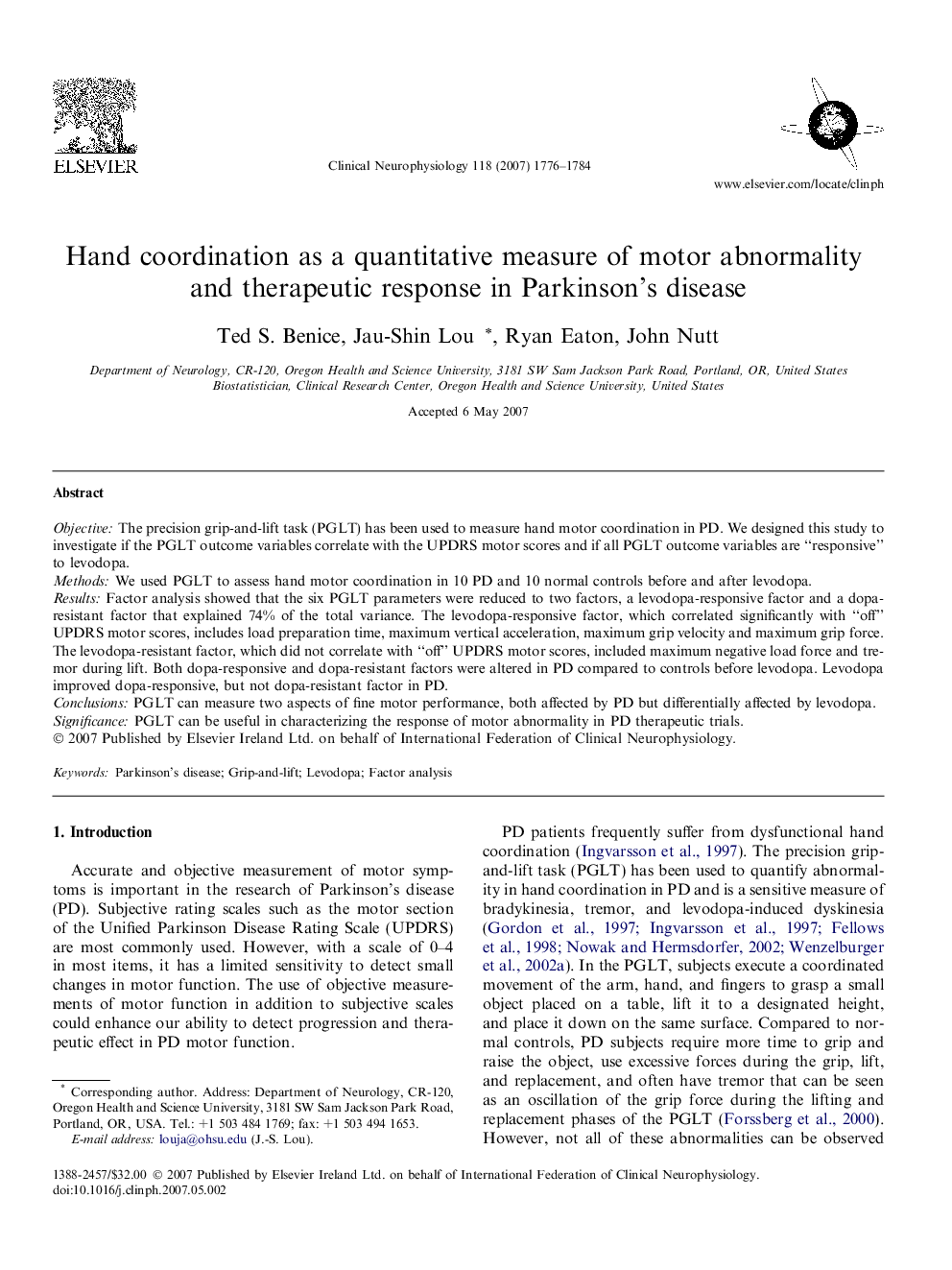| کد مقاله | کد نشریه | سال انتشار | مقاله انگلیسی | نسخه تمام متن |
|---|---|---|---|---|
| 3047785 | 1185065 | 2007 | 9 صفحه PDF | دانلود رایگان |

ObjectiveThe precision grip-and-lift task (PGLT) has been used to measure hand motor coordination in PD. We designed this study to investigate if the PGLT outcome variables correlate with the UPDRS motor scores and if all PGLT outcome variables are “responsive” to levodopa.MethodsWe used PGLT to assess hand motor coordination in 10 PD and 10 normal controls before and after levodopa.ResultsFactor analysis showed that the six PGLT parameters were reduced to two factors, a levodopa-responsive factor and a dopa-resistant factor that explained 74% of the total variance. The levodopa-responsive factor, which correlated significantly with “off” UPDRS motor scores, includes load preparation time, maximum vertical acceleration, maximum grip velocity and maximum grip force. The levodopa-resistant factor, which did not correlate with “off” UPDRS motor scores, included maximum negative load force and tremor during lift. Both dopa-responsive and dopa-resistant factors were altered in PD compared to controls before levodopa. Levodopa improved dopa-responsive, but not dopa-resistant factor in PD.ConclusionsPGLT can measure two aspects of fine motor performance, both affected by PD but differentially affected by levodopa.SignificancePGLT can be useful in characterizing the response of motor abnormality in PD therapeutic trials.
Journal: Clinical Neurophysiology - Volume 118, Issue 8, August 2007, Pages 1776–1784